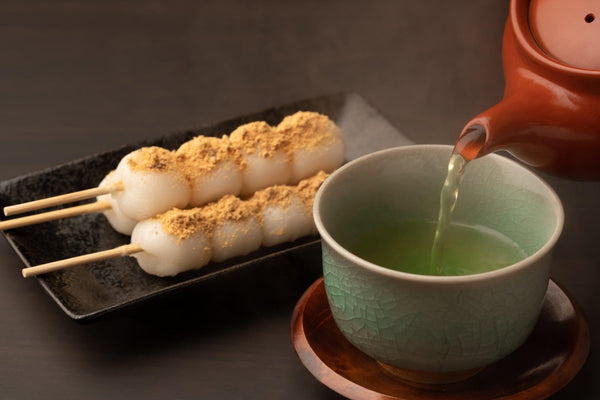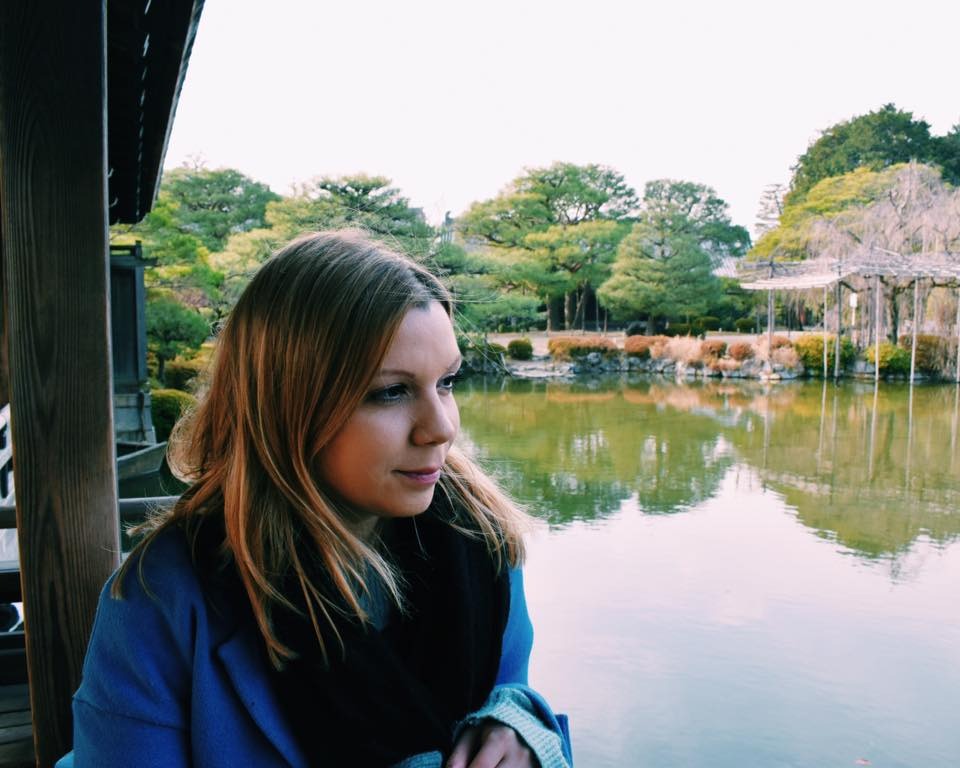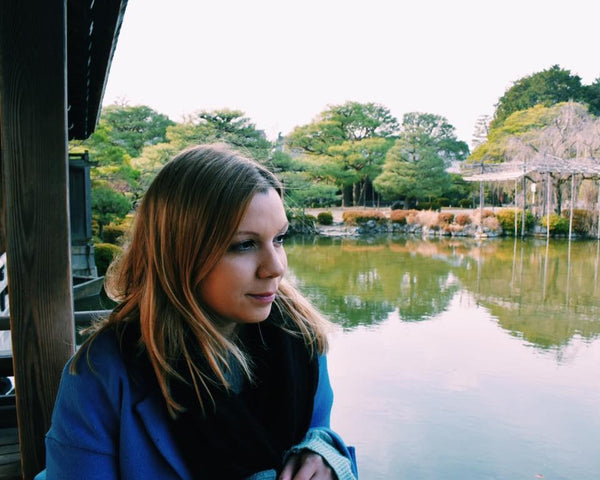
Jump to:
What Is Dango?
Dango is a type of traditional Japanese sweet known as wagashi that is often enjoyed as a snack or dessert. It is made from mochiko, a type of rice flour, and is typically molded into small ball-shaped or cylindrical dumplings that are usually served on skewers. Dango comes in various flavors and colors, and it has a soft, chewy texture.
Dango has a long history in Japanese culture and is considered a popular traditional food. It is often associated with festivals and other special occasions, and it is commonly served with green tea.
In this article, we’ll explore the various types of dango, how dango differs from mochi, the history of dango in Japanese culture, and where you can buy the ingredients to try making your own dango at home!
A Brief History Of Dango In Japan

Although its exact origins are unknown, it is believed that dango has been consumed in Japan for thousands of years, since the Jomon Period – Japan’s earliest culture. Back then dango was made from acorns that were ground into powder after being soaked in water. The powder would have been made into a paste or dango-shaped balls which were then eaten.
After the introduction of grains to the Japanese diet, the tradition of eating dango continued, using rice flour instead of acorns, and by the Muromachi period (1336 -1573), skewered dango balls were already being eaten.
Dango grew even more in popularity during the Edo period in the 1700s and was commonly sold at street stalls and festivals, often served with green tea.
Today, dango continues to be a popular traditional food in Japan, with many types and flavors available. It is enjoyed by people of all ages and is often served at festivals, ceremonies, and other special events.
What Is The Difference Between Dango and Mochi?

Although they are both rice-based sweets with a similar appearance and texture, there are differences between dango and mochi. Whilst dango is made from a kind of rice flour called mochiko, mochi is made from glutinous rice that has been ground, steamed, and pounded into a sticky ball.
There are also differences in the texture too, dango is softer and chewier than mochi which has a stickier texture. Another way to tell the difference between the two is that dango is usually served on skewers, and mochi often has a filling inside like strawberry or red bean paste.
What Are Some Different Types Of Dango?
There are many different varieties of dango produced throughout Japan, with lots of prefectures offering their own special version. Here are a few popular types for you to try during your next visit to Japan.
Mitarashi Dango

One of the most famous and popular types of dango, it features 3-5 skewered dumplings covered in a sweet glaze made from soy sauce, sugar, and starch. Mitarashi dango can also be made easily at home as well! If you want to make it at home, be sure to check out our mitarashi dango recipe.
Anko Dango

These are dumplings covered in a sweet red bean paste. The sweetness from the red bean paste mixed with the chewy dango makes for the ultimate sweet treat. Pair it with a cup of green tea and you've got the ultimate afternoon snack!
Anko dango can be made with both smooth red bean paste or chunky red bean paste, so you can choose your favorite one based on your textural preferences.
Kinako Dango

This type of dango is coated with roasted sweet soybean flour, also known as kinako. Kinako has a unique sweet, roasted nutty flavor, making this dango treat absolutely delicious.
Goma Dango

Goma dango may be a more well-known type of dango treat. It is usually found in Chinese restaurants in Japan. Chewy dango are coated in nutty sesame seeds and are deep-fried until they turn golden brown. The dango becomes soft yet chewy, and the sesame seeds complement the natural sweetness of the dango nicely. Sometimes, there is even red bean paste inside.
Hanami Dango

Hanami dango are colorful dango usually served during cherry blossom season. The dumplings are made in spring colors of pink, white, and green and are a popular item sold at cherry blossom festivals. They make for the ultimate hanami treat, and can easily be made at home too. If you'd like to try hanami dango, then you've got to try our hanami dango recipe!
Yomogi Dango

This variation of dango is flavored and colored with Japanese mugwort (yomogi) plant. Yomogi has a herby and earthy taste and is similar in color to matcha.
Matcha Dango

These are dango made with matcha green tea powder, a popular flavor in traditional Japanese confectionary items.
5 Regional Varieties Of Dango
In addition to the types of popular dango mentioned above, multiple regions of Japan also have their own dango specialties – here are some of the most well-known ones. Be sure to try them if you are visiting any of the following prefectures!
Botchan Dango

This tricolored dango is a specialty of Matsuyama in Ehime Prefecture. The dango takes its name from the famous novel Botchan, written by renowned Japanese writer Natsume Soseki and is also mentioned in the book. The red, yellow, and green dumplings are colored using azuki beans, egg, and matcha.
Sasa Dango

Sasa dango is a well-known specialty of Niigata Prefecture which dates back around 500 years and whose main ingredients include mochiko flour, bamboo grass leaves, dried mugwort, and red bean paste. These dumplings are traditionally wrapped in bamboo leaves and tied with a type of grass as a string. Sasa dango are particularly popular during Kodomo no hi (Children’s Day) in May.
Kibi Dango

Kibi dango are a specialty of Okayama Prefecture and have strong ties to Japanese folklore, featuring prominently in the story of Momotaro, a boy born from a peach who eats magical kibi dango and goes on to defeat ogres. The dango featured in the story comes from Kibitsu Shrine in Okayama Prefecture and has been a highly sought-after souvenir since the Meiji period (1868-1899).
Kibi dango are coated with a powder made from the Japanese grain kibi (sweet millet). Nowadays, you can find these dango in original, fruity, and even matcha flavors when you visit Okayama.
Ikinari Dango

Ikinari dango is originally from Kumamoto Prefecture on the south-westerly island of Kyushu. The name ‘ikinari’ which means suddenly in Japanese, refers to the fact that this type of dango can be made quickly for when unexpected visitors call by. They are made with flour and filled with sweet red bean paste and steamed sweet potato.
Gomasuri Dango

This popular variety of dango originated in Iwate Prefecture in Japan’s Tohoku region. Gomasuri dango are filled with black sesame paste, known in Japanese as nerigoma, which produces a nutty flavor that melts in the mouth.
When Do Japanese People Eat Dango?
Dango is enjoyed throughout the year in Japan, but there are certain periods and festivals where you’ll find it’s particularly popular. For example, during the cherry blossom season, the hanami dango featuring dumplings made in spring colors of pink, white, and green are a common festival food.
In addition to hanami dango, tsukimi dango are also popular during the annual moon viewing tsukimi festival. Tsukimi refers to Japanese festivals that honor the autumn moon, which usually take place all over Japan around the month of September. Tsukimi dango are eaten as part of the celebrations – and are usually white round dumplings made to resemble the appearance of the moon.
Where Can I Buy Dango In Japan?

If you’re planning a visit to Japan, here are some recommended famous dango shops you should try to check out if you have the opportunity:
Kototoi Dango
This famous dango shop located in Tokyo’s Mukojima area close to the Sumida River has been in business since Japan’s Edo era and specializes in making dango that is not on a skewer but comes in boxes and flavored with either red or white bean paste as well as miso that melts in your mouth.
Habutae Dango
This dango shop in Tokyo is over 200 years old having been founded back in 1819. Inside the store they have seating where you can enjoy your dango and a cup of green tea overlooking a small koi garden. It is said that many famous Japanese authors used to visit this store which serves dango that has been cooked over a charcoal fire and dango made with azuki red bean paste.
Kamo Mitarashi Chaya
This famous dango shop in Kyoto is believed to be the birthplace of mitarashi dango and is located close to Shimogamo Shrine. This long running establishment is famous for their dango featuring five dumplings – said to be inspired by the bubbles of water from the nearby shrine.
Where To Buy Dango Outside Of Japan
If you’re not able to hop over to Japan anytime soon to try dango, you can always try making it yourself at home! They are surprisingly easy to make, require few ingredients, and don’t take much time to prepare.
You can get most of the ingredients you need to make dango directly from Japan to your home via the Japanese Taste website. Here are the special ingredients you’ll need:
Shiratamako Flour Glutinous Rice Flour

The flour is made from 100% Japanese glutinous rice and is ideal for making dango and other wagashi items like daifuku and mochi. Sweets made from shiratama flour are gluten-free and result in a chewy texture and mild sweet flavor.
Soy Sauce

Soy sauce, or shoyu, is one of the main ingredients used to make the sweet glaze sauce on mitarashi dango. We recommend using a general-purpose dark thick shoyu known as koikuchi In Japanese. You can check out our extensive range of Japanese shoyu here.
Mirin

Mirin is a Japanese pantry essential item used in many kinds of dishes from sweet to savory. It’s a sweet rice wine made from glutinous rice, rice malt, shochu, or brewed alcohol, and sugar in a fermentation process that takes between 40 and 60 days. You’ll need mirin in addition to soy sauce to make the sweet glaze for mitarashi dango.
Interested in learning more about other kinds of traditional Japanese confectionary? Check out this article on 10 Famous Japanese Wagashi That You Need To Try.


0 comments